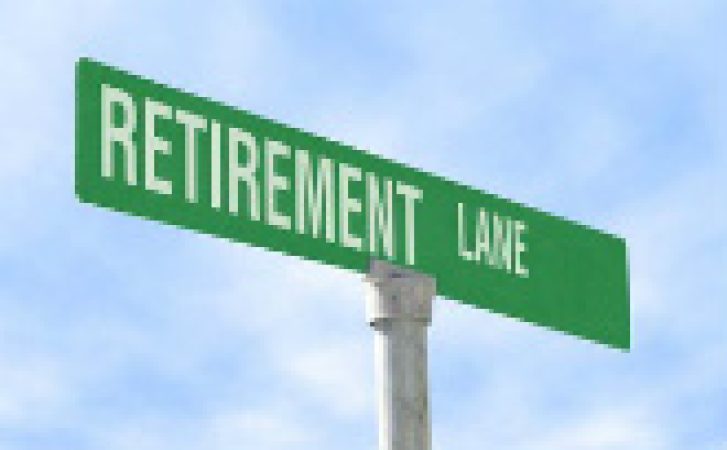(This column ran in the Richmond Times Dispatch on February 13, 2012.)
Frantically, many Virginia Retirement System (VRS) stakeholders have asked me: “Are we really in a financial danger zone?” With the potential McDonnell infusion of $2.21 billion to VRS, my response elevates to “not likely.”
When I began a VRS trusteeship 10 years ago, it was clear the commonwealth’s pension program was not underfunded (104 percent for state employees, 99.4 percent for teachers). Now, as I conclude a final five-year term, my grudging suspicion ricochets within … economic certainty has been thwarted.
Trustee colleague John M. Albertine, of Albertine Enterprises Inc., nailed it: “People think we are entering a period of very sluggish, uncertain economic performance. …The economy may not respond the way it has before.” Amen.
Before Christmas, the Joint Legislative Audit and Review Commission (JLARC) unfolded suggestions directed to Virginia’s legislators: Do not reduce employee benefits, nor risk Virginia’s competitiveness in hiring/retaining talent. Additionally, JLARC recommended when the legislature sets contribution rates less than VRS certified, an engaging fiscal analysis should result; legislative rejection of proposed VRS rates could bring unsparing scrutiny.
Facing increased certification of contributions for 579 political subdivisions, plus teacher plans, VRS confronted a degenerative fiscal reality: Design a new time-extended methodology creating less impact on rate increases. This would drop a 5 percent increase to 3.4 percent. Dr. Edward T. Burton III, board colleague, labeled this proposal “hocus pocus,” adding, “This phase-in implies higher rates later.” It pains me to agree.
Additionally, Jose I. Fernandez (Cavanaugh Macdonald Consulting), actuary to VRS, reminded: Money saved up front must be repaid. “That’s not free,” he scolded. Nothing ever is. One estimate predicts teacher pension contributions would increase by $26.2 million in Henrico County, $25 million in Chesterfield and $10 million in Hanover under VRS certification last fall.
Enter Gov. Bob McDonnell.
For state employees, the VRS recommended an employer rate of 13.07 percent plus 5 percent totaling 18.07 percent. The governor’s state employee proposal was 8.76 percent plus 5 percent (6 percent) equaling 13.76 percent — about three-fourths of the board recommendations. For teachers, VRS recommended 16.77 percent plus 5 percent equaling 21.77 percent — the governor recommended 11.66 percent plus 5 percent — again about three-fourths of the board’s rates.
True, the governor does not fully fund the board’s requests; yet, his proposal of record-level contributions to Virginia’s General Assembly clearly declares VRS a top priority with his $2.2 billion, and signals war on “chronic underfunding” …when the General Assembly goes along. One formidable hurdle: Would sizable payment increases be mandates for local governments — not the commonwealth? Hope remains.
Thanks to now-retired CIO Charles W. Grant, I was allowed enviable opportunity to enhance investment strength. With a superb investment department, this trustee considered the investment staff worth the cost, and more. Still, newly appointed Chairman Diana F. Cantor accurately remarked, “We cannot invest our way out of unfunded status.” Then do your best.
When markets displayed cracks in 2007, VRS headwinds wouldn’t interrupt 148,500 retirees receiving monthly checks. The fund had to scrounge deeper for cash — from investments, from approximately 350,000 workers planning retirement and from taxpayers. Pessimism was pandemic.
Robert Carlson, former VRS trustee colleague, addressed the economic storms. As Gov. Jim Gilmore’s gubernatorial appointee, Carlson, one of VRS’ best thinkers in the early 2000s, was denied a second term on purely political grounds. Published by the Thomas Jefferson Institute for Public Policy (here), Carlson conveyed that structural imbalance was only partly responsible. The commonwealth’s historic failure to contribute its share (paying far less than it should during 17 of the past 20 years) necessitated a search for long-term reform.
Citing a passage from Institutional Investor, Carlson suggested combining a pension on the first $50,000 of a worker’s salary with a defined contribution plan on the rest. He quoted the piece, “We shouldn’t be asking taxpayers, who make $50,000 themselves, to be guaranteeing the lifetime income of a university chancellor who makes $150,000.”
Speaking at Virginia Retired Teachers Association meetings, the sentiment was understood. … Maybe this is where we are.
McDonnell’s efforts aside, additional positives surface: VRS stakeholders enjoy strong leadership with Robert J. Schultze, director; Ronald D. Schmitz, newly appointed chief investment officer; and Franklin O. Berry, internal audit director.
The fund is professionally guided. Hauntingly, VRS fund ratios continue to nag: In 2002 state employees and teachers were funded at 104.1 percent and 99.4 percent respectively. By 2010, those figures dropped to 75.2 percent and 68.6 percent — a clear indication of distress.
While it’s an exquisite honor to have served, I exit the VRS with inward disappointment. Recently, Pimco’s William H. Gross wrote, “The financial markets and global economies are at great risk.” Currently, at least two-thirds of the system’s income will depend on successful market investments (not unusual for most funds). For me, this is not comforting, not comforting at all.
Email this author






